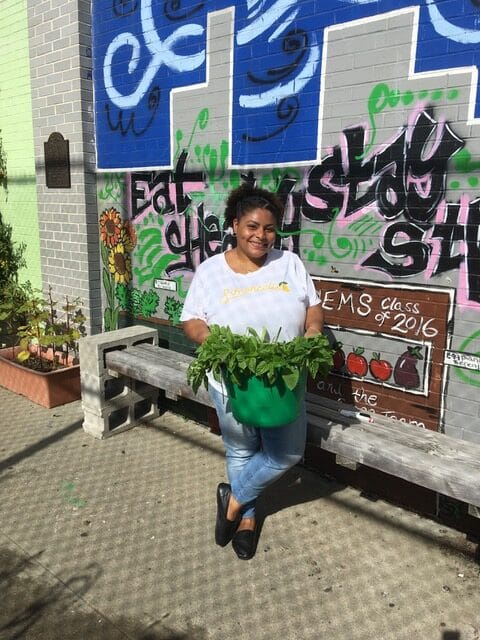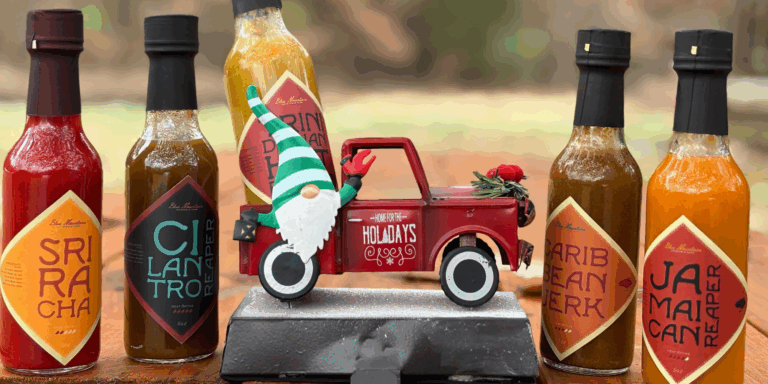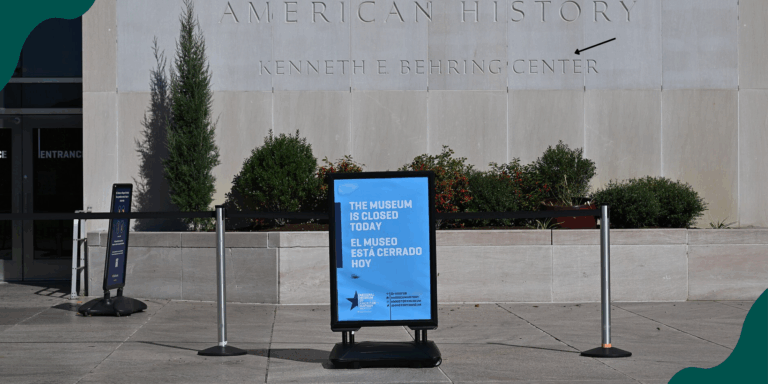FoodCorps Alum Spotlight: Paloma Jones Grows Connections
We caught up with FoodCorps alum Paloma Jones to see how she continues to connect to communities post-service.
Help nourish students’ minds, bodies, and hearts this holiday season!
We caught up with FoodCorps alum Paloma Jones to see how she continues to connect to communities post-service.

In 2018, then-FoodCorps service member Paloma Jones wrote a powerful essay about connecting to her Latine heritage through her service in Brooklyn, New York.
“A big part of what drew me to FoodCorps was the opportunity to work with kids who can relate to me and hopefully see some of themselves in me,” she wrote in 2018. “In my time as a student, I did not always have teachers who looked like me. It cannot be said enough, but representation is important, especially when it comes to both education and health.”
After that, Paloma went on to continue working with her service site; she’s now a Garden and Kitchen Educator with Edible Schoolyard NYC. We caught up with Paloma to see how the rest of her service lived up to her aspirations, as well as what she’s up to in her current role.
FoodCorps: Reflecting back on your service in New York, what were some of the highlights?
Paloma Jones: The biggest highlight of my service was definitely my students! Middle schoolers can be pretty intimidating and I can admit I was a little scared to work with them at the start of my service year, but I quickly learned how great this age group is. Middle school is where most kids start to come into their own and embrace their individuality in addition to becoming a bit more independent. This meant I got to work with some of the funniest, sassiest, and most memorable humans I have ever met. I have so many great student stories that I couldn’t pick a favorite one if I tried.
You wrote about the importance of connecting to your Latine heritage through your service. What did that look like for you?
There is a large English Language Learner (ELL) population at my service site (Evergreen Middle School), with most students coming from Spanish-speaking countries. So at the start of my service, I was pretty nervous about having to speak more Spanish which is something I’ve been self-conscious about in the past, but throughout that first year it was something that I practiced and improved on a lot. Something I also noticed was how relieved the students were when they realized I could understand them and that in some ways I could relate to them.
What lessons did you learn from your students?
The main lesson I learned from my students is really just about being yourself. Not only do they show up every day as their full authentic selves, that is also what they are drawn to in their interactions with other people, especially adults. The program director at Edible has on a few occasions called me the “middle school whisperer,” which is her way of saying that the students respond well to me and that I do a good job working with this age group that many consider challenging. The only reason for this is that I’ve learned that my students want people to be real and honest with them but also don’t necessarily want to be treated like babies. So, I have learned from them and make sure to just be myself — which seems to be working out pretty well.
What has been the role of food in connecting to your heritage?
When I reflect on some of my best memories, I think of all the delicious food I ate during those times. Food is such a big part of my life and keeps me connected to my family, especially my grandmother. Food has such an amazing ability to bring you back to a specific time or place, may it be through a certain smell or flavor. I can so easily think of the times in my great-aunt’s house waiting with my sister and cousins for the bacalaítos (fish cakes) to come off the hot frying pan and having to wait even longer for them to cool down to eat them.
How does your current work allow you to connect to and celebrate your heritage?
One of the most impactful methods I use when working with students, especially the ELL students, is storytelling. Students love sharing stories about where they are from, especially if that includes the food that they eat, and I love sharing about foods that connect to my life and heritage as well. It is always so much fun to share about similar foods or have discussions about the best way to eat a plátano. In the past I even had the opportunity of making one of my favorite dishes with students, arroz con gandules, or rice and peas.
How do you continue to engage with your community post-service?
I feel so extremely lucky that I had the opportunity to continue working with ESYNYC and stay at Evergreen after my service term. I have been able to continue to engage and make connections with the school community. This past June the students who were in the sixth grade during my service year graduated, and while it is always sad to see them go, one of the joys of working with middle school is that you can see how much students grow up in that short time span. Sometimes I’ll see past students and they’ll mention something we made or an activity we did and it is pretty amazing to see the lasting impact.
Read Paloma’s original essay here.

5 Awesome Small Businesses by FoodCorps Alums

How to Advocate to Your School Board for Nourishing Food

The Policy Brief: Government Shutdown Edition